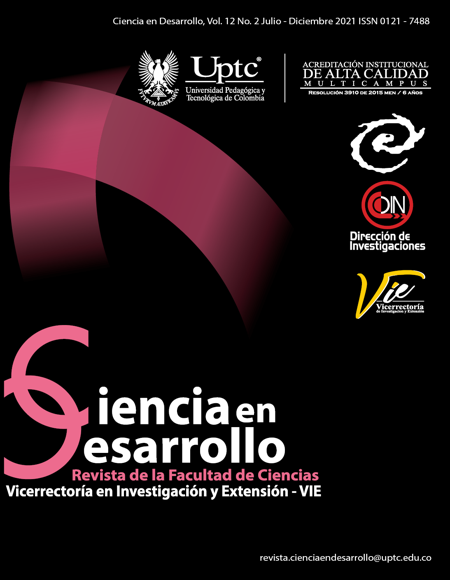Generation of gait trajectories for a humanoid robot from motion capture

Abstract
In this research paper, we propose a method to adapt the gaits trajectories of a human being to a humanoid robot. To achieve this goal, first we made an experiments with with two different motion capture systems to obtain the joint trajectories of human walking. The trajectories obtained by motion capture serve as input to a trajectory generator off-line, called dynamic filter that takes into account the kinematic and dynamic constraints necessary to prevent the robot fall while walking. To validate the trajectories, a simulator was used for the robot Bioloid Premium Kit based on the V-Rep environment. After, these were implemented on the real robot. Even though the motion generation is done offline, the dynamics filter is a good option for making in automated way the trajectories generation.
Keywords
Motion capture, Trajectory Generation, Humanoid robotics, Humain gait, Optimization
Author Biography
Diego Alberto Bravo Montenegro
Profesor Titular Departamento de Física (Universidad del Cauca). Ingeniero Físico (2003), Esp. en Automatización Industrial (2007), Magíster en Ingeniería Automática (2012). Dr en Ciencias de la Electrónica (2016).
References
- C. M. a. Luigi Biagiotti, Trajectory Planning for Automatic Machines and Robots. Springer Berlin Heidelberg, 2009.
- T. Kröger, On-Line Trajectory Generation in Robotic Systems: Basic Concepts for Instanta- neous Reactions to Unforeseen (Sensor) Events (Springer Tracts in Advanced Robotics, 58). Springer tracts in advanced robotics, 1st edition. ed., 2010. DOI: https://doi.org/10.1007/978-3-642-05175-3_1
- B.SicilianoandO.Khatib,SpringerHandbook of Robotics. Springer, 2008. DOI: https://doi.org/10.1007/978-3-540-30301-5
- J. Tacué, C. Rengifo, and D. Bravo, “An expe- rimental energy consumption comparison bet- ween trajectories generated by using the cart- table model and an optimization approach for the bioloid robot,” International Journal of Advanced Robotic Systems, vol. 17, no. 2, pp. 1– 14, 2020. DOI: https://doi.org/10.1177/1729881420917808
- J. W. Grizzle, C. Chevallereau, R. W. Sinnet, and A. D. Ames, “Models, feedback control, and open problems of 3d bipedal robotic walking,” Automatica, vol. 50, no. 8, pp. 1955 – 1988, 2014. DOI: https://doi.org/10.1016/j.automatica.2014.04.021
- D. Bravo and C. Rengifo, “Estabilidad y con- trol de sistemas mecánicos de base móvil,” Revista Mexicana de Fisica, vol. 18, pp. 69–75, 01 2021. DOI: https://doi.org/10.31349/RevMexFisE.18.69
- D.BravoMandC.RengifoR,“Motioncapture system for applications in robotics,” in Engineering Mechatronics and Automation (CIIMA), 2014 III International Congress of, pp. 1–5, Oct 2014. DOI: https://doi.org/10.1109/CIIMA.2014.6983433
- K. Munirathinam, S. Sakkay, and C. Chevalle- reau, “Dynamic motion imitation of two arti- culated systems using nonlinear time scaling of joint trajectories,” in International Conference on Intelligent Robots and Systems (IROS), (Algarve, Portugal), May-June 2012. DOI: https://doi.org/10.1109/IROS.2012.6385681
- D. A. Bravo and C. F. Rengifo, “Generation from motion capture for a planar biped robot in swing phase,” Ingeniería y Ciencia, vol. 11, pp. 25–47, Aug. 2015. DOI: https://doi.org/10.17230/ingciencia.11.22.2
- Z.Popovic,“Editing dynamic properties of captured human motion,” in Robotics and Automation, 2000. Proceedings. ICRA ’00. IEEE International Conference on, vol. 1, pp. 670–675 vol.1, 2000.
- N. Pollard, J. Hodgins, M. Riley, and C. Atke- son, “Adapting human motion for the control of a humanoid robot,” in IEEE International Conference on Robotics and Automation, vol. 2, pp. 1390 – 1397, 2002.
- L. Poubel, S. Sakka, D. Cehajic, and D. Creu- sot, “Support changes during online human motion imitation by a humanoid robot using task specification,” in Robotics and Automation (ICRA), 2014 IEEE International Conference on, pp. 1782–1787, May 2014. DOI: https://doi.org/10.1109/ICRA.2014.6907092
- K. Hu, C. Ott, and D. Lee, “Online human walking imitation in task and joint space based on quadratic programming,” in Robotics and Automation (ICRA), 2014 IEEE International Conference on, pp. 3458–3464, June 2014. DOI: https://doi.org/10.1109/ICRA.2014.6907357
- J. Koenemann, F. Burget, and M. Bennewitz, “Real-time imitation of human whole-body motions by humanoids,” in Robotics and Automation (ICRA), 2014 IEEE International Conference on, pp. 2806–2812, May 2014. DOI: https://doi.org/10.1109/ICRA.2014.6907261
- C. N. Thai and M. Paulishen, “Using robotis bioloid systems for educational robotics,” IEEE Transactions on Robotics, 2011. DOI: https://doi.org/10.1109/SECON.2011.5752954
- V. Nunes, L. Olvera, and J. Pamanes, “Simulation and experimentation of walking of the bioloid humanoid robot,” in 13th World Congress in Mechanism and Machine Science, 2011.
- W. Khalil and E. Dombre, Modeling, Identi- fication and Control of Robots. Kogan Page Science, Paris, France: Butterworth - Heinemann, 2 ed., 2004.
- Z. Shiller, K. Yamane, and Y. Nakamura, “Planning motion patterns of human figures using a multi-layered grid and the dynamics filter,” in Robotics and Automation, 2001. Proceedings 2001 ICRA. IEEE International Conference on, vol. 1, pp. 1–8 vol.1, 2001.
- S. Delp, F. Anderson, A. Arnold, P. Loan, A. Habib, C. John, E. Guendelman, and D. The- len, “Opensim: Open-source software to create and analyze dynamic simulations of move- ment,” Biomedical Engineering, IEEE Transac- tions on, vol. 54, pp. 1940–1950, Nov 2007. DOI: https://doi.org/10.1109/TBME.2007.901024
- C. D. Boor, A Practical Guide to Splines. Springer, 2001.
- M. Vukobratovic ́, “Zero-moment point. thirty five years of its life,” International Journal of Humanoid Robotics, vol. 01, no. 01, pp. 157– 173, 2004. DOI: https://doi.org/10.1142/S0219843604000083
- D.Bravo and C.Rengifo,“Designofadynamic simulator for a biped robot,” Modelling and Simulation in Engineering, vol. 2021, pp. 1–12, 2021. DOI: https://doi.org/10.1155/2021/5539123
